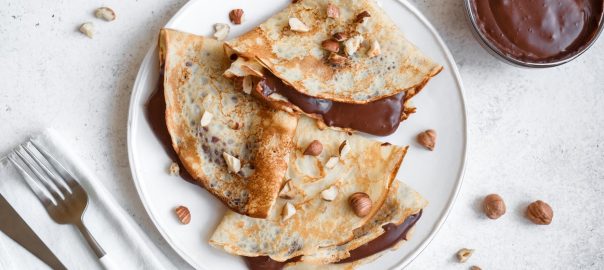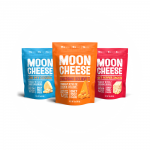
Make Great Low Carb French Cuisine
Recipes & Tips for Delicious Low Carb French Foods
French cuisine is highly regarded around the world for having some of the most delicious flavours and precise techniques. For low carb dieters, French cooking is definitely something to explore. The main ingredients in French cooking, such as meats, cheeses, butter, eggs and vegetables are perfect for a low carb diet. Just skip the baguettes, croissants and pastries! And don’t worry about having to master your culinary skills – there are several classic French dishes that are perfect for home cooks!
History of French Cuisine
Since the middle ages, one of the hallmarks of French cuisine has been visual presentation. This is why a lot of famous chefs go to culinary school in France to learn the intricate plating techniques practiced by esteemed chefs. We eat not only with our mouths, but also with our eyes. Challenge yourself to plate your low carb French meals beautifully to capture the true essence of this country’s cuisine.
A lot of French dishes were born out of the availability of resources to the different social classes in France. A few hundred years ago, the elite class would display their wealth by roasting a swan or a peacock! Game-y meats such as venison, rabbit, and wild boar were also very rare and prized by the upper classes. Meanwhile, the diets of the peasants and lower-class members of society consisted mainly of bread, soups and stews and gave birth to French countryside style of cuisine.
The French Revolution in the 18th century brought an end of the guild system which meant that anyone could produce and sell culinary items as they desired. More people all over the country gained access to a variety of foods that were once only available to the ruling class. This opened the door for innovation and new styles of cooking. Still today we see a range of French dishes that have their roots in different social classes and regions but are now available not only all over France but all over the world!
Common French Ingredients
French cuisine is very seasonal, using only the freshest ingredients available during a given time of year. Mushrooms, green beans (haricots verts), zucchini, eggplant, leeks, carrots, and turnips are just a few fresh vegetables that you will commonly see in French recipes. Most of these are safe for low carb cooking. If cooking with green beans, carrots or eggplant, use more sparingly.
French meals are traditionally seasoned with a variety of herbs grown in the French countryside to add depth of flavour and freshness. Some of the most popular seasoning used in French cooking is a medley of different herbs and spices, known as herbes de Provence. Typically, this blend consists of basil, fennel, marjoram, parsley, rosemary, tarragon, and thyme and can sometimes include lavender, too! Fleur de sel, seawater salt crystals from Brittany, France, is also usually sprinkled on top of finished dishes.
French food is highly centred around meats. Recipes often call for poultry such as chicken, pheasant, duck, or squab. Other meats that are common in French cooking include beef, veal, lamb and pork. Seafood from the Mediterranean can also be found in more coastal regions of France. Typical catches include fish such as tuna, salmon and sardines, as well as shrimp, mussels, and other shellfish. And who could forget about the infamous frog legs and snails? (We’re trying.)
Eggs are another very popular ingredient in French cooking, but unlike Western cultures, they are mostly eaten for lunch and dinner and rarely for breakfast! They can be poached, hard boiled, scrambled or made into omelettes. They are also a staple ingredient in classic French sauces such as Mousseline, Hollandaise, and Béarnaise.
French Cooking Techniques
Many recipes that originate from France are so unique because they involve the use of regionally developed cooking techniques. Here are a few common French techniques that do not require a fancy culinary degree!
Sautéing
The name of this method comes from the French sauter which means to jump. It involves cooking meat or vegetables in a shallow saucepan on high heat with a bit of olive oil or butter. By quickly moving the food around the pan, this method is similar to making the food “jump”, which explains the name.
Poaching
Poaching involves submerging food in hot but not quite boiling water, which produces a very delicate result. Eggs and fish are the most common ingredients prepared this way.
Read our guide to making the perfect poached eggs.
Braising
This method of cooking meat involves a few steps:
- First sear the meat in a deep cooking dish on the stove with a bit of oil
- Remove the meat and add chopped vegetables to the juices left over in the pot.
- Deglaze the pot with wine.
- Add the meat back to the pot with stock or water and let it finish cooking on low heat for 1-3 hours.
- Enjoy your juicy, tender meat!
Broiling
This simply involves cooking oiled food over medium heat on either a stove or grill. Cooking at too high of a temperature will burn the food since there is direct contact with the hot surface.
Now that we’ve explored some of the common ingredients and methods that are used to prepare French dishes, let’s dive into some delicious recipes that you can cook at home. These are all low carb versions of classic French meals that will definitely be great additions to your weekly meal plan and will certainly get rave reviews from your family and friends!
Crepes are thin pancakes that are served with either sweet or savoury fillings. These low carb crepes are made with coconut flour instead of traditional wheat flour.
Some low carb fillings for your crepes could include:
- Nutilight Sugar-Free Chocolate and Nut Spreads with a few berries (low in carbs)
- Cream cheese with Nature’s Hollow Sugar-Free Jams
- Broccoli and cheddar cheese (try this recipe, but leave out the flour. If you want to use a thickener, you could use Xanthan Gum as a low carb substitute).
French Onion Soup is served all over the world, and for good reason. It’s a hearty, comforting soup that tastes great, especially when it’s colder outside. Choose from one of our low carb buns to use in this recipe instead of traditional French bread.
Here’s a signature French dessert that is light and delicate, although hard to master. Challenge yourself to make these classic French cookies when you are craving something light and sweet, but oh, so satisfying! Serve these with coffee or tea and imagine yourself sitting in a little Parisian café.
This traditional veggie casserole was once considered food for peasants – but everyone needs their fibre! You can eat it on its own, served over a rice substitute or with a toasty piece of low carb bread. It’s also great for serving family-style along with braised lamb shanks for an all-around French meal.
Quiche
Quiche is a delicious and filling choice for breakfast, brunch, lunch or dinner! Whether you decide to go crust-less or not, we have two recipes here that will blow your taste buds away:
Salad Niçoise is perfect for low carb dieters. It is packed with protein, healthy fats and low carb veggies. Plus, salads are super easy to make! Try this recipe if you are bored of your usual greens.
Coq au Vin
Coq au vin literally means chicken in wine – and that’s what it is: chicken braised in red wine (traditionally) with some kind of fat, such as pig lardon, and vegetables. If you have a slow cooker at home, this is super easy to make. Here’s a recipe for Slow Cooker Coq au Vin. Additionally, if you want to take the fat up a notch in this dish, try this Creamy Keto Coq au Vin. Perfect for a weeknight or a homecooked date night meal!
Boeuf Bourguignon
This dish is also known as Beef Burgundy, due to its inclusion of red Burgundy wine from the Burgundy region of eastern France. Once again, it uses the technique of braising in red wine, but this dish resembles more of a beef stew. Here is a recipe we found for Boeuf Bourguinon with Cauliflower Mash – a perfect low carb pairing for this heart stew.
Tips for Cooking with Wine on a Low Carb Diet
You may have noticed that a lot of these French recipes involve the use of wine – and you may be wondering if this is okay for a low carb diet. One thing to know is that cooking with wine is very different from drinking wine. Most of the alcohol – which is what affects blood sugar levels – gets cooked off during the process. This is especially true if you are using the wine as a braising liquid for several hours. You should opt for a less sweet wine to avoid excessive sugars (we definitely don’t recommend cooking with a bottle of Moscato), and most recipes don’t call for too much, anyways.
Stay Connected
If you tried any of the classic French recipes mentioned in this article, we’d love to know!
Share your photos and experiences with us on Facebook or Instagram. We also love to stay connected with our Weekly Newsletters for updates on the latest products and special sales.
And please leave us a Google Review with your Low Carb Grocery experiences!






